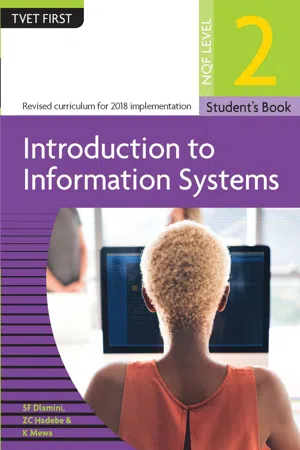
This is a test
- English
- PDF
- Available on iOS & Android
eBook - PDF
Book details
Table of contents
Citations
About This Book
Written by experienced TVET lecturers, this book covers all aspects of the updated syllabus.Theoretical concepts are explained in easy-to-follow language.Well-chosen case studies and examples make the content more accessible.
Frequently asked questions
At the moment all of our mobile-responsive ePub books are available to download via the app. Most of our PDFs are also available to download and we're working on making the final remaining ones downloadable now. Learn more here.
Both plans give you full access to the library and all of Perlego’s features. The only differences are the price and subscription period: With the annual plan you’ll save around 30% compared to 12 months on the monthly plan.
We are an online textbook subscription service, where you can get access to an entire online library for less than the price of a single book per month. With over 1 million books across 1000+ topics, we’ve got you covered! Learn more here.
Look out for the read-aloud symbol on your next book to see if you can listen to it. The read-aloud tool reads text aloud for you, highlighting the text as it is being read. You can pause it, speed it up and slow it down. Learn more here.
Yes, you can access Introduction To Information Systems NQF2 SB by S Dlamini, K Mlewa & Z Hadebe in PDF and/or ePUB format, as well as other popular books in Business & Business General. We have over one million books available in our catalogue for you to explore.
Information
Table of contents
- Front cover
- Features of this book
- Title page
- Copyright page
- Contents
- Topic 1: Information processing in the business organisation
- Module 1 A typical organisational environment
- Module 2 Management in a typical organisational environment
- Module 3 Processes followed by managers when making decisions
- Module 4 The importance of accurate and detailed management information in an organisation
- Module 5 The importance of suitable and accurate information systems in a business
- Topic 2: Information technology and its components
- Module 6 Information technology
- Module 7 Information systems
- Topic 3: The impact of information technology on business practices and the economy
- Module 8 The impact of computers onmanagement and information systems
- Module 9 The impact of computers on control
- Module 10 Risks and advantages associated with computerised operations in business
- Module 11 Computer viruses
- Module 12 The impact of information technology on business practices and on the economy
- Topic 4: The history of computers
- Module 13 The birth of the computer
- Module 14 The different computer categories
- Module 15 Advances in memory and processor technology
- Module 16 Different modes of processing
- Topic 5: Introduction to computer architecture
- Module 17 The computer as an electronic processor
- Modlue 18 The functioning of the central processing unit
- Module 19 The difference between input and direct-entry hardware
- Module 20 The three different types of terminals used for data input
- Module 21 Using a keyboard for data input
- Module 22 The different categories of direct-entry input devices
- Module 23 Audio-input and video-input devices
- Module 24 Importance of input controls
- Module 25 Basic forms of output and categories of output media andhardware
- Module 26 Hard-copy output devices
- Module 27 Soft-copy output devices
- Module 28 Difference between primary and secondary storage
- Module 29 How data is represented on a magnetic disk
- Module 30 Characteristics of mobile storage devices
- Module 31 Hard disks for computer systems
- Module 32 Optical-disk storage technology
- Module 33 The different compression techniques
- Glossary
- Words and terms
- Back cover